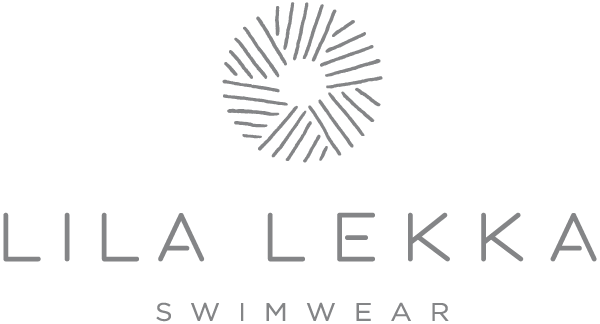
If the company was using the straight-line depreciation method, the annual depreciation recorded would remain fixed at $4 million each period. The prior statement tends to be true for most fixed assets due to normal “wear and tear” from any consistent, constant usage. However, using the double declining depreciation method, your depreciation would be double that of straight line depreciation. While some accounting software applications have fixed asset and depreciation management capability, you’ll likely have to manually record a depreciation journal entry into your software application.
This article will serve as a guide to understanding the DDB depreciation method by explaining how it works, why it can be beneficial, and its potential downsides. We take monthly bookkeeping off your plate and deliver you your financial statements by the 15th or 20th of each month. Businesses choose to use the Double Declining Balance Method when they want to accurately reflect the asset’s wear and tear pattern over time. So, in the first year, the company would record a depreciation expense of $4,000. As a result, at the end of the first year, the book value of the machinery would be reduced to $6,000 ($10,000 – $4,000).
How to plan double declining balance depreciation
Under the generally accepted accounting principles (GAAP) for public companies, expenses are recorded in the same period as the revenue that is earned as a result of those expenses. Unlike straight line depreciation, which stays consistent throughout the useful life of the asset, double double declining balance method declining balance depreciation is high the first year, and decreases each subsequent year. In terms of accounting, with the passage of time the value of a fixed asset (like machinery, plants, furniture etc.) goes down over a specific period of time is known as depreciation.
- This article is a must-read for anyone looking to understand and effectively apply the DDB method.
- You’ll also need to take into account how each year’s depreciation affects your cash flow.
- Companies use depreciation to spread the cost of an asset out over its useful life.
- You calculate 200% of the straight-line depreciation, or a factor of 2, and multiply that value by the book value at the beginning of the period to find the depreciation expense for that period.
- For instance, if an asset’s market value declines faster than anticipated, a more aggressive depreciation rate might be justified.
- If the double-declining depreciation rate is 40%, the straight-line rate of depreciation shall be its half, i.e., 20%.
For example, a company that owns an asset with a useful life of five years will multiply the depreciable base by 5/15 in year 1, 4/15 in year 2, 3/15 in year 3, 2/15 in year 4, and 1/15 in year 5. This method falls under the category of accelerated depreciation methods, which means that it front-loads the depreciation expenses, allowing for a larger deduction in the earlier years of an asset’s life. Depreciation is the act of https://www.bookstime.com/ writing off an asset’s value over its expected useful life, and reporting it on IRS Form 4562. The double declining balance method of depreciation is just one way of doing that. Double declining balance is sometimes also called the accelerated depreciation method. Businesses use accelerated methods when having assets that are more productive in their early years such as vehicles or other assets that lose their value quickly.
Double-Declining Balance Depreciation Method
Let’s get a better understanding of what it is and how we can apply this formula to improve finances. On the whole, DDB is not a generally easy depreciation method to implement. Accelerated depreciation techniques charge a higher amount of depreciation in the earlier years of an asset’s life.
- For the second year of depreciation, you’ll be plugging a book value of $18,000 into the formula, rather than one of $30,000.
- Then, calculate the straight-line depreciation rate and double it to find the DDB rate.
- It is calculated by multiplying a fraction by the asset’s depreciable base in each year.
- However, fixed assets do not constitute an expenditure for a specific period.
That translates into higher depreciation expense at the beginning and much lower at the end. By reducing the value of that asset on the company’s books, a business is able to claim tax deductions each year for the presumed lost value of the asset over that year. Given the nature of the DDB depreciation method, it is best reserved for assets that depreciate rapidly in the first several years of ownership, such as cars and heavy equipment. By applying the DDB depreciation method, you can depreciate these assets faster, capturing tax benefits more quickly and reducing your tax liability in the first few years after purchasing them.
Step two
The double-declining balance (DDB) method is a type of declining balance method that instead uses double the normal depreciation rate. To calculate the depreciation expense for the first year, we need to apply the rate of depreciation (50%) to the cost of the asset ($2000) and multiply the answer with the time factor (3/12). On the other hand, with the double declining balance depreciation method, you write off a large depreciation expense in the early years, right after you’ve purchased an asset, and less each year after that.

For example, if an asset costs $10,000, you can write off $1,000 annually over ten years. The DDB depreciation method is best applied to assets that quickly lose value in the first few years of ownership. This is most frequently the case for things like cars and other vehicles but may also apply to business assets like computers, mobile devices and other electronics.
Double Declining Balance Depreciation Formulas
On the other hand, another factor to remember is that predicting your income can be complicated. Balance sheets are not balanced when you apply a double-balancing method. That can make predicting the evolution of your company’s income more complicated. When we divide these concepts, we obtain the basic annual depreciation rate. If we continue with the previous example, $10,000 divided by ten years will give us a yearly depreciation rate of $1,000.
It’s important to accurately estimate the useful life to ensure proper financial reporting. Depreciation is a crucial concept in business accounting, representing the gradual loss of value in an asset over time. Among the various methods of calculating depreciation, the Double Declining Balance (DDB) method stands out for its unique approach. This article is a must-read for anyone looking to understand and effectively apply the DDB method. Whether you’re a business owner, an accounting student, or a financial professional, you’ll find valuable insights and practical tips for mastering this method. Although it is a complicated term, double declining balance depreciation is considered a good idea for pre-saving on possible business expenses.



